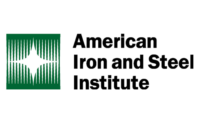“Both of these NSF-sponsored research projects will advance cold-formed steel light-frame design in buildings, bringing it to the next level by equipping engineers to utilize modern performance-based seismic designs for cold-formed steel,” Jay Larson, P.E., F. ASCE, managing director of AISI’s Construction Technical Program, said. “AISI will provide technical support and guidance for the projects. We will also disseminate the findings to the research and practicing engineering communities to accelerate technology transfer of these advancements to the marketplace.”
Benjamin Schafer, Ph.D., P.E., chairman of the Department of Civil Engineering at the Johns Hopkins University and long-time member of the AISI Committee on Specifications and Committee on Framing Standards, was awarded an NSF grant in the amount of $923,000 to study ways to improve the seismic performance of buildings that use CFS light-frame construction for their primary structure. He will lead a research team from JHU, Bucknell University, and Devco Engineering that will develop computational models to determine how a complete building structure will perform during an earthquake. The analysis and initial testing will take place at JHU, and then culminate in the testing of a two-story CFS light-frame building on the shake table at the Network for Earthquake Engineering Simulation equipment site at the University of Buffalo. An important deliverable from the project will be a new cold-formed steel design for implementation in OpenSees, an open source software framework that allows users to create finite element applications that simulate how structural systems respond to earthquakes.
Cheng Yu, Ph.D., assistant professor and coordinator of the Construction Engineering Technology Program at the University of North Texas, was awarded an NSF CAREER grant in the amount of $400,010 to provide “Comprehensive Research on Cold-Formed Steel Sheathed Shear Walls: Special Detailing, Design and Innovation.” He will lead a research team in the development of advanced designs of high-performance shear wall systems with enhanced ductility and strength for low-cost building constructions in high seismic and high wind areas. The project will include the following:
- Configuring a testing method to investigate the performance of CFS shear walls under realistic loading conditions to provide reliable experimental data,
- Establishing analytical models to predict the shear strength of CFS shear walls made with different sheathing materials, and
- Developing advanced designs of high-performance shear wall systems with enhanced ductility and strength for low-cost building constructions in high seismic and high wind areas.
More information on both projects is available in abstract format from NSF:
- NSF Award Abstract #1041578, “NEESR-CR: Enabling Performance-Based Seismic Design of Multi-Story Cold-Formed Steel Structures,” (Benjamin Schafer, Ph.D., P.E.), click here. For ongoing updates and full information, visit www.ce.jhu.edu/cfsnees.
- NSF Award Abstract #0955189, “CAREER: Comprehensive Research on Cold-Formed Steel Sheathed Shear Walls: Special Detailing, Design, and Innovation” (Cheng Yu, Ph.D).



Report Abusive Comment